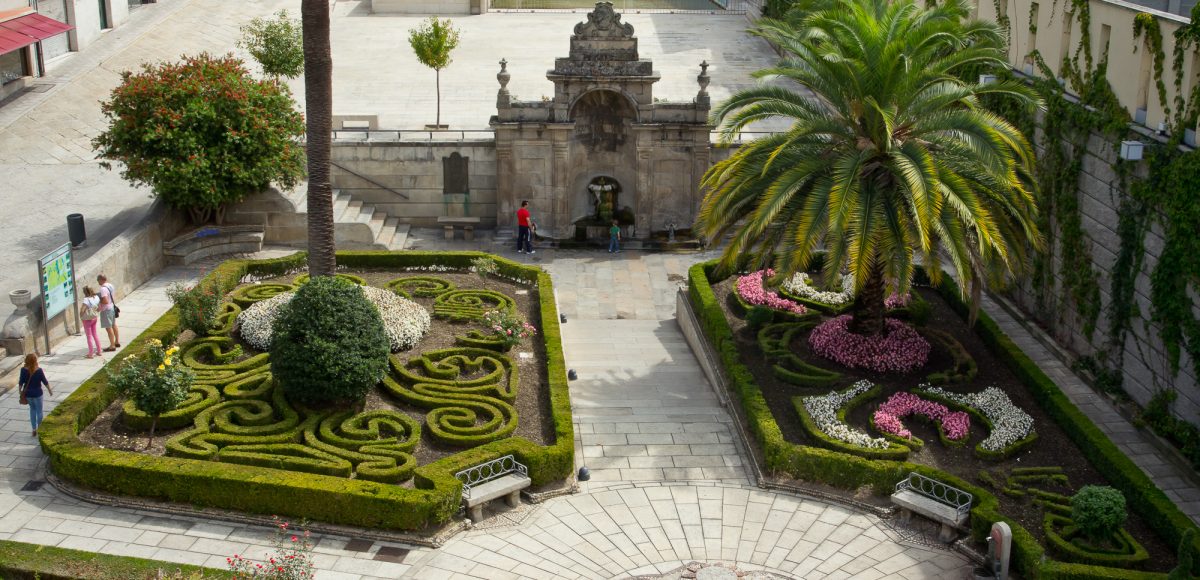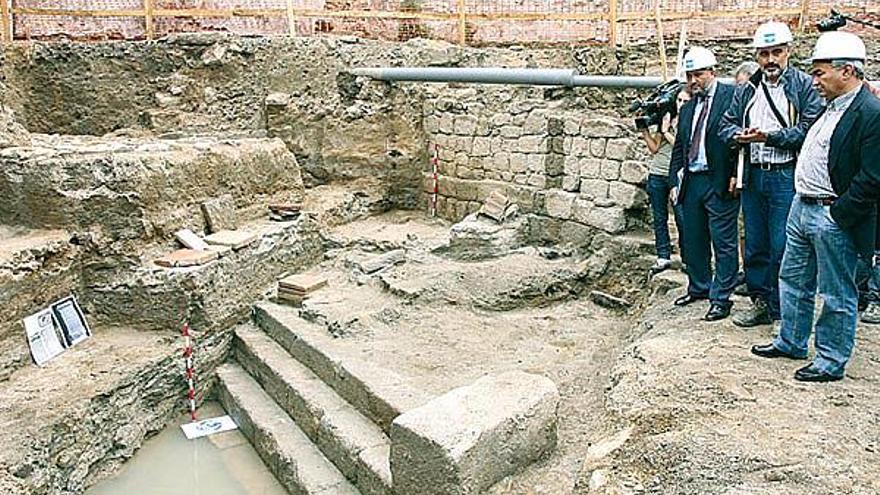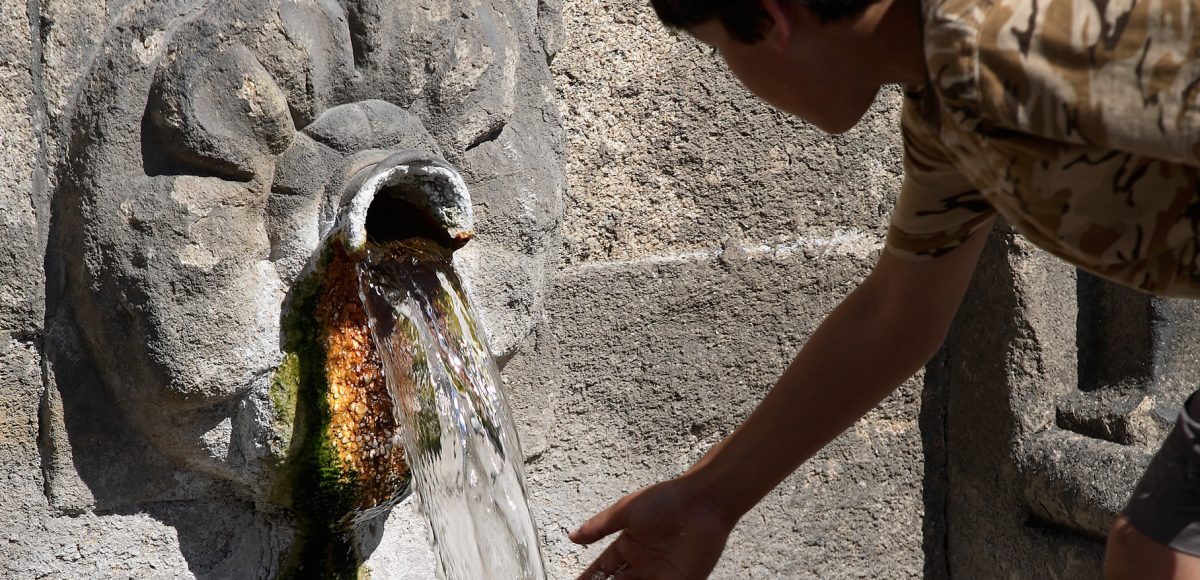In the entry I would like to talk about the sustainable exploitation of natural resources, using the As Burgas hot springs located in the city of Ourense as an example:
For the last 15 years, the city of Ourense has been sponsored as the thermal capital of Galicia. Currently geological studies estimate more than 70 thermal surges in Ourense, with a flow of more than three million liters per day, an amount that in Europe only exceeds Budapest. The phenomenon is due to the granite composition of the soil, full of fractures through which the rainwater filters up to several kilometers deep. It is down there where the water is heated that then returns to the surface with the help of air pressure.
While we know that the “boiling pot” of Ourense formed by the rivers Miño, Loña and Barbaña was already inhabited during the Bronze Age, the city was born with the Romans, who began to settle in the area largely drawn by the presence of hot water springs. In fact, the name of Aquis Aurienses with which the place was known refers to “golden waters”, either because of the mineral deposited in the Miño basin that the Romans would have exploited, or because of the value of the therapeutic springs.
So, the resource had always been there, but it was decided to exploit it to attract tourism. In fact, if we look at the portal of the City of Ourense practically only the spas and hot springs are announced:

Source: Tourism Website of Ourense
Numerous spas, hotels and hot springs were built throughout the province; and a thermal route was designed along the river Miño in the city of Ourense, which includes three thermal baths, both public and private. All these actions can be discussed from a territorial point of view, but in this post I am going to focus on the As Burgas hot springs, the oldest ones in the city and perhaps the best known.
As Burgas are in the historical center of Ourense and are composed of three different springs, which range between 64 and 81°C. In the image we can see one of the fountains, of neoclassical style, built in the mid-nineteenth century, surrounded by a little garden:
The most recent excavations (1995-2010) have confirmed the theory with the discovery of new stones engraved through whose inscriptions we know the cult of the god Revve Anabaraego. We know from these discoveries that As Burgas would have been a sacred place even before the arrival of the Romans, and that they kept the cult, building springs on it and a pool-sanctuary for the god’s home, responsible for the healing powers of the waters. On the boulevard of the As Burgas Interpretation Center, we can visit today the remains of this construction, dated in the 1st century AD.
However, thanks to the construction of numerous spas and the route on the Miño River, the touristic potential of As Burgas was discovered, and in 2003 a company under the name of Xardín das Burgas proposed the construction of a spa in the historic center of the city, taking advantage of the flow of the fountains and a nearby abandoned building, which used to be a prison.

This company bought a pice of land in the area and presented the government at the time with a project. In May of that same year they began the previous works for the construction of a four star spa hotel, of about interior 4000 m2 a land that surpassed the 24000 m2, which supposed an investment of about 18 million Euros, after a requalification of the land. It was a project that only existed on paper, until early 2005, when some unauthorized excavations associated with the construction of a new spa, one of the wells that feed As Burgas was drilled, losing 40% of the spring, and drying one of the main spouts of the springs through which the waters arise. This fact motivated in part the beginning of the declaration dossier as an Asset of Cultural Interest of the historical site of As Burgas by the Xunta de Galicia, which would finally be approved in 2007. To prevent further damage, in May 2006 the Xunta de Galicia decided to intervene to preserve the environment, prohibiting any action close to the springs.
All this did not stop the City Council, which decided to build a thermal pool in the upper area of the springs, a project that began in 2008 with a budget of € 230,000, and was completed in 2009. The issue was that while construction was done with the permission of the Xunta, the permit for the use of the waters was not obtained. That is, a pool without water was built to fill it. After years of paperwork, it was opened to the public in 2012.
The numerous archaeological remains that were found during the excavations can be visited at the Interpretation Center of As Burgas, a project that meant more expenses, in particular about € 175,000 for the enhancement of the remains and € 65,000 for the construction of the Center.
Meanwhile, the company Xardín das Burgas presented a claim to the Court of Xustiza de Galicia for just over 16 million, which with interest exceeded 27 million euros as a result of the annulment of the General Municipal Plan of 2003, which It had requalified the land as developable, which was rejected in October 2017.
In conclusion, we have a natural resource, which had been used by the locals for centuries, which was about to be destroyed by a project, although this would have an irreversible impact on the city, not to mention the thousands of euros wasted. Construction was initially allowed without an adequate prior study, as was done in many pre-crisis projects in Spain. Now, in retrospect, we can learn from our mistakes so in the future we do not make them again.

